#gheeraerts
Text

Margaret Laton, Attributed to Marcus Gheeraerts the Younger, 1620
#Margaret laton#attributed to Marcus gheeraerts the younger#Marcus gheeraerts the younger#Marcus gheeraerts#gheeraerts#1620#1620s#1600s#17th century#painting#portrait#art
16 notes
·
View notes
Text

"Portrait of an Unknown Lady" by Marcus Gheeraerts the Younger (1595-1600) presented in "A History of Jewellery: Bedazzled (part 2: Renaissance)" by Beatriz Chadour-Sampson - International Jewellery Historian and Author - for the V&A Academy online, February 2024.
#conferences#inspirations bijoux#bijoux de tête#peinture#style#dentelle#perle#Gheeraerts#ChadourSampson#V&AAcademy#Victoria&AlbertMuseum
3 notes
·
View notes
Text
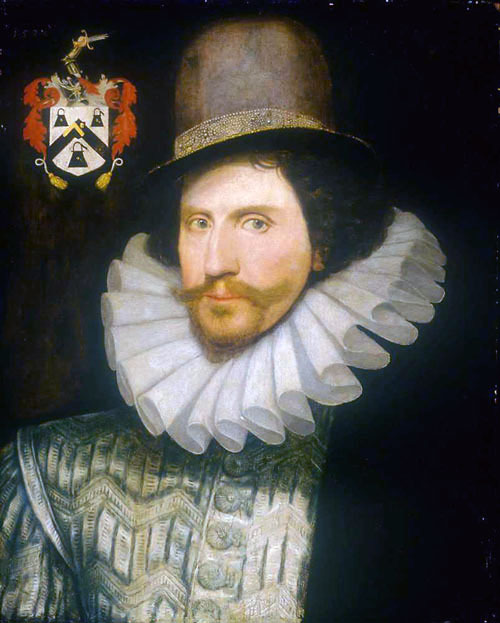
1586 Marcus Gheeraerts the Elder - Sir Henry Palmer, Knight
(Memorial Art Gallery of the University of Rochester)
63 notes
·
View notes
Text






florence + the machine lyrics x colors x textiles in art – black
Kiss with a Fist – Lungs // Queen Elizabeth I – attributed to Nicholas Hilliard 🐈⬛ Lover to Lover – Ceremonials // Portrait of a Woman – Antonis Mor 🐈⬛ Spectrum – Ceremonials // Catalina Micaela of Austria, Duchess of Savoy – Alonso Sánchez Coello 🐈⬛ Bedroom Hymns – Ceremonials // Portrait of Mary Rogers, Lady Harington – Marcus Gheeraerts the Younger 🐈⬛ June – High as Hope // Portrait of Madame Leblanc – Jean Auguste Dominique Ingres 🐈⬛ South London Forever – High as Hope // Anna of Denmark, Duchess of Saxony – Lucas Cranach the Younger
#florence + the machine lyrics x colors x textiles in art#nicholas hilliard#alonso sánchez coello#marcus gheeraerts the younger#jean auguste dominique ingres#lucas cranach the younger#kiss with a fist#lover to lover#spectrum#bedroom hymns#june#south london forever#lungs#lungs album#ceremonials#high as hope#florence + the machine#florence and the machine#fatm#art#art history#lyrics#lyric art
91 notes
·
View notes
Photo

Portrait of Mary Rogers, Lady Harington by Marcus Gheeraerts the Younger, 1592
#Marcus Gheeraerts the Younger#1592#1590s#elizabethan era#16th century#mdp16th c.#britain#16th c. britain
58 notes
·
View notes
Photo
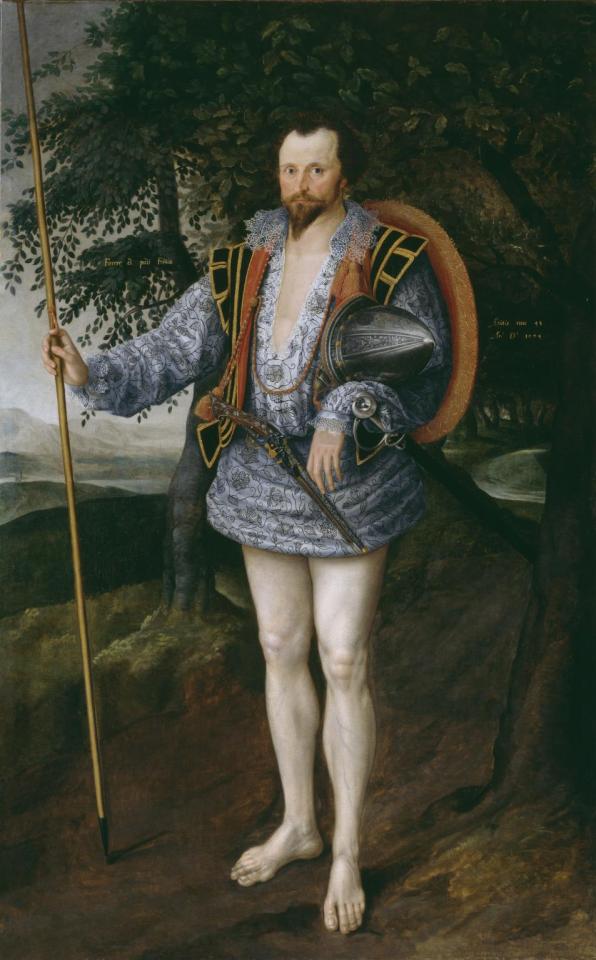
Portrait of Captain Thomas Lee, 1594 by Marcus Gheeraerts II (Flemish, 1561/2--1636)
412 notes
·
View notes
Text
I have recently assisted to a short presentation given at my university by none other than Tony Gheeraert, aka THE currenty expert on Perrault's fairytales and one of the great names of the current scholarly study of literary fairytales (in France). To give you an example, the scientific edition of Perrault's fairytales I own was made by him. And since the topic of his intervention fits something I was asked about before, and that many people here took an interest for, I decided to put some of my notes here.
Because Gheeraert's intervention took place as part of a seminary centered around one specific subject: "The Middle-Ages in the 17th century literature" (in France of course).
Long story short: the main and defining trait of the Renaissance, in popular culture, in widespread knowledge, as taught in schools, is its rejection of the Middle-Ages, right? Renaissance is all about rediscovering the Antiquity, imitating Ancient Greece, the worship of Ancient Rome - and breaking off from this ghastly Dark Ages with their filth and their ignorance and their dreadful Gothic architecture... Right?
Well... Not really. You see, this whole idea of "Middle-Ages VS The Renaissance" comes from a time period ranging from the Romantic era (where the Romantic "rediscovered" everything Gothic and medieval, and heralded it as the greatest muse of all times, and built at the same time the golden myth of the idolized feudal time and the dark legend of the barbaric ages) to the 19th century (which is where the Middle-Ages took shape in institutions, "built" by historians such as Michelet who really marked the rupture between the 15th century, obscure and ignorant, and the enlightened and more refined 16th century). As a result, there is this idea that the Middle-Ages were completely rejected and forgotten during the Renaissance, and that the first ones to truly love, embrace or take inspiration from this era were the Romantics.
The whole point of the seminary is to prove that this is actually false - and that the Renaissance was filled and imbued with medieval culture and interpretations (or re-interpretations) of the Middle-Ages. One of the main reasons the "medievalism of the classics" stayed in a blind spot of researchers (the very expression is an oxymoron since today "classicicm" and "medievalism" are considered conflicting opposites) is notably precisely because the "Middle-Ages" as we know them today were not invented yet. In the Renaissance culture and language the "Middle-Ages" did not exist... But it does not mean Renaissance folks did not had an understanding or an awareness of the Middle-Ages - as so many people claimed. The fact is that Renaissance was the era right next to the Middle-Ages: it was a direction continuation, and for Renaissance people medieval times were the "recent" past. There hadn't been any official decree or historical theory claiming the Middle-Ages were done or the Renaissance had truly began at X date. And so, there was a "medievalism" in the Renaissance, but one that wasn't "loud and clear" so to speak, unlike the Romantic medievalism.
But even with this fact acknowledged today, the idea that the Renaissance was "medieval" too has a hard time getting recognized. There was a mention of a very recent book published last year, "Le dictionnaire du Moyen-Âge imaginé" (The dictionnary of the imaginary Middle-Ages) - and it did mention that there was a strong medievalism during the 16th century, dawn of the Renaissance but also remaining lights of the medieval dusk... But then it claims that it all stopped by the 17th century, "Le Grand Siècle", all about Antiquity with no medieval thing whatsoever - only for the Middle-Ages to return by the mid 18th century.
And the seminary is all about proving that, no, there were medieval things in the 17th century French culture and literature, underneath the whole "praise and glory" of the Antiquity. Tony Gheeraert was invited to share his insight on fairytales - the iconic literary movement of the end of 17th century, and one of the most "medieval" cultural movements of the Renaissance France.
[Side-note: One of the main examples of the medievalism of the 16th century is the enormous success in France of the translation of the Spanish chivalry novel "Amadis de Gaula", in French "Amadis de Gaule" - you know, the best-seller that Cervantes wrote his Don Quixote as a reaction to. It was even called in France "La bible du roi", "The bible of the king", in reference to Henri IV's great love for this book.]
Of course, the 17th century did not have an exact, faithful or correct understanding of the Middle-Ages - but the interest here is to see how the century imagined and remagined this era, how they accused it of certain things, or attributed to it others ; how they twisted and reused medieval motifs for themselves, or how they created "false" Middle-Ages.
And so, what can a quick glimpse at these 17th century fairytales can tell us? Gheeraert focused on four authors part of the aristocratic circles and literary salons of the fairytales: Perrault, of course, because he is the most famous today and one of his three tales in verse, Griselidis, was inspired by Boccace's Decameron - a most medieval work. Madame d'Aulnoy, the one who started the entire trend and wave of literary fairytales. Mademoiselle Lhéritier (sometimes spelled L'Héritier), the niece of Perrault, who was a member of prestigious academies and had received numerous great literary prizes in her time (but who was erased by the sexist historians of literature) [Plus she also evoked in her writing the "style troubadour" centuries bfore it became an actual thing]. And finally Fénelon - who left some famous lines about his strong distaste and disgust at the Gothic architecture, but also wrote fairytales (published posthumously, originally written for his pedagogical work as the preceptor of the royal heir). Gheeraert also included in his study corpus Fraçois Nodot, who didn't write any fairytales but did wrote a "fairy novel" - Histoire de Mélusine, itself a 17th adaptation of a 14th century novel by Jean d'Arras.
Again I am simplifying and recaping things here: Tony Gheeraert, to shortly and simply prove that medievalism DID exist in 17th century fairytales, took all the major and important studies (French or Anglo-Saxon) that define medievalism, in the context of the Romantic movement for example, and extracted from it seven criteria. Seven main traits that sum up what "medievalism" is. And then applied them to the fairytales of the 17th century France.
Trait 1: Nostalgia for chivalry and knighthood (a la Walter Scott). A passion for knight-like heroism with a code of honor and loyalty, the courtly behavior of the old knighthood...
Yes, we find this in fairytales. After all, the French fairytales are THE archetype of the knight in shining armor saving a damsel in distress from a dragon. However, beyond this, Tony Gheeraert pointed out something truly fascinating: the fairytales of the time were aimed at an audience composed of people part of, or close with, a nobility in decline. Louis XIV had entrusted most of the political power to the bourgeoisie, while the original nobility beware a powerless "ornament" at the court, only here to look pretty. As Raymonde Robert pointed out in her extremely informative book about the French literary fairytales, the nobility of the time used of a form of "escapism" with these tales of idealized knights and princesses. An example would be madame d'Aulnoy's fairytale "La Princesse Belle-Etoile et le Prince Chéri" (Princesse Beautiful-Star and Prince Darling): it depicts three brothers and their sister, who discover that they are actually cousins, and princes and princesses, they are all brave and generous ; and the titular Prince Darling embodies all the knightly virtues (he is loyal, courageous, devoted). He undergoes typical "knight-trials" and in the end the courtly love wins as he gets to marry Princess Beautiful-Star... Who is his cousin, yes, that was regularly kingly things.
Trait 2: A reaction against the rationality of the Enlightenment (a la Radcliff, Lewis, Grimm or Keats) - a love of ghosts and curses and the supernatural...
Jean-Paul Sermain, in his own studies of fairytales, called the end of the 17th century a "post-critic" era. A time when "naivity" and "naive" things were asked for, revendicated and proudly presented, as the triumph of rationalism. A rationalism that might have even been perceived as "drying out" reality - for example, we have to remember that great rationalist minds such as Descartes or Malebranche were very hostile towards literature as a whole. Jean-Paul Sermain refers to these fairytales as "metafictions" and compares Perrault's stories to those of Walpole - fairytales delight in "putting to sleep the reason of the Classics", and while it tells of the supernatural, it is with a distance - just like how the Gothics wrote about ghosts and demons without believing in them, Perrault wrote about fairies without believing in them.
Trait 3: A taste for Gothic architecture, or for the neo-Gothic (a la Horace Walpole, or like Victor Hugo's Notre-Dame-de-Paris). As I said before, Fénelon is remembered for his strong dislike of Gothic architecture, that he saw as bad and imperfect due to its grotesque extravagances, its excess of ornaments - he much preferred the simple, "natural", perfectly-balanced Greco-Roman architecture. However, when the first editions of Perrault's "Stories or Tales of the Past" were published, the illustrations invoked a clearly medieval architecture - such as Bluebeard's domain, which is depicted as a medieval castle. In fact, there is a very amusing fact when one reads Perrault's Bluebeard (I already evoked it on my blog before): when the story begins, Bluebeard's house is presented as a typical wealthy countryside house of the times of Louis XIV, but when the story reaches its nightmarish climax, the various descriptions and location hints prove that Bluebeard's house is suddenly a typical "creepy Gothic castle" - such as how sister Anne is located at the top of a CASTLE TOWER. Speaking of towers - we cannot list all of the fairytales involving a princess locked up in a tower, nor can we list all the references to a "castle" (château) rather than a palace "palais". Madame d'Aulnoy could be the most revealing of those authors - ranging from her famous story "The Blue Bird" about a princess locked at the top of a medieval tower, to "The Gold Branch" about protagonists locked in another old castle-tower filled with stained glass and medieval illustrated scrolls. We know that madame d'Aulnoy had a great knowledge and passion for everything that touched to paleography: she liked to collect old medieval manuscripts, and had an habit when younger of "customizing" her books and journals so that they looked like medieval tomes and grimoires.
Which makes us jump to... Trait 4: A taste for erudition and old manuscripts (a la Francisque Michel).
As I said before, we know that madame d'Aulnoy had this knowledge, experience and passion of medieval manuscrits - a very revealing trivia is how at thirteen years old she wrote on the entry pages of the books that belonged to her all sorts of occult warnings and curses for anyone that would dare steal or degrade the volume - proving her interest for old grimoires, dark magic and a certain "mystification", the invention of "fake medieval manuscripts". Because what made a teenage madame d'Aulnoy dream was the same thing that made Gothic authors dream: dark, obscure, Gothic Middle-Ages filled with supernatural, and threats, and curses - Tony Gheeraert even made the joke that she was not so much interested in the Middle-Ages than by "medieval fantasy". Even though, as she grew up, she gained a true knowledge of the actual medieval era. For example, Nadine Jasmin, in her study of maame d'Aulnoy's fairytales, found out that the fairytale "The Pigeon and the Dove" was actually a rewrite of a medieval novel called "Floire et Blancheflor", with explicit references to this medieval tale in d'Aulnoy's text. We also know that she and Perrault both were aware of the existence of the Arthurian novel "Perceforest", from which they took the idea of "inviting fairies at a meal after the birth of a child".
Trait 5: An interest for medieval Christianity (such as Montalembert's Les Moines d'Occident). The Romantics loved to see the Middle-Ages as a time of intense faith, but what about the fairytale authors? Well, as you might know by now (because I evoked it several times on my blog), the writing of the fairytales took place in a literary and cultural feud that shook the 17th century: the Moderns vs the Ancients. The dominating artistic model was the Ancients - the belief that Antiquity had been the peak and golden age of art, and that as such all modern productions had to imitate and recreate what the Greco-Romans did. Perrault was the unofficial head of the Modern movement (to which almost all of the other fairytale authors belonged) - artists claiming that one could invent new things instead of just repeating old models, and that there were other valid sources of inspiration for art, beyond Ancient Greece or the Roman Empire. Fairytales were part of this feud - one of the "Modern" genres, proving that you could write interesting stories by using local folklore and medieval sources rather than the Greco-Roman myths.
And of course, this feud extended to the religious domain. The Ancients defended the idea that you could only make art using elements not part of the "one true religion" (Christianity) - as such this is why they insisted on using the religions of the Greek and the Romans, "false" and "dead" religions. However, in return the Moderns accused them of perpetuating paganism, and one of their main effort was to prove that you could do things such as Christianity-inspired epics. (Which in turn led to accusations of blasphemy, overall this was a circle without end). While not overtly Christian, the literary fairytales of the time did have Christian elements psrinkled here and there clearly showing the tales' belonging to the Modern movement - such as how the fairies of Sleeping Beauty are invited to the princess' christening ; or how Bluebeard's wife demands to be able to pray one last time before dying. This was in direct opposition to the "ornamental paganism" that was asked by the unofficial leader of the Ancients - Boileau, Perrault's archnemesis. Overall, as Tony Gheeraert pointed out, in a twist compared to modern days, the Moderns formed a "counter-culture" to the mainstream model of the Ancients... A national and Christian counter-culture, prefiguring the Romantic medievalism. Yep, Perrault and co were "rebels" for writing about purely French stuff and openly Christian things.
Trait 6: An interest for folklore (a la Achille Millien, and the widespread tradton of collecting folk-tales, oral literature and folk-art). Now, this trait is... more complex than the others. The Romantics collected and published folklore and folktales - the brothers Grimm are the most famous example of this practice, and in fact today we like to oppose Perrault, an elitist and courtly author who wrote and invented fairytales, to the Grimm, who collected "authentic" folktales directly from the lower class. But... are Perrault and Grimm so different?
The topic of folklore in French literary fairytales has been wiely discussed and debated - first by Marc Soriano, then by Marc Fumaroli. However, when it comes to the angle of medievalism, of the fantasy and phantasm of the Middle-Ages rather than a real influence, the answer is definitively - yes, medieval folklore did play an important part. Take Mademoiselle Lhéritier - when she wrote and published her fairytales, she openly described them as "folktales" that were originally created by medieval literature. In her "Oeuvres mêlées" (her first collection of fairytales), she wrote that, the stories she published were originally the inventions of troubadours, medieval novels that then were passed through the people, became popular culture and folktales - in short, the fairytales she writes in her book are "degraded" versions of medieval literary works. This was her main thesis - and in this theory the people, the "folk" of folktale, was both topraise and blame. To praise for keeping and allowing the survival of these medieval works, to blame for "degrading" and "soiling" this great literature into vulgar and dirty stories. Now, that being said, we know today that, historically speaking, this is an entirely false and absurd belief - but for mademoiselle L'Héritier, it was actually a very plausible and likely theory. Because of one precise phenomenon, most embodied by La Bibliothèque Bleue (The Blue Library) - a famous brand of cheap books sold by peddlers all across France. The Blue Library, like all peddlers-sold literature, were cheap products for a low and poor clientele, uneducated if not illiterate - as a result, what these books did was usually take back a literary work or a famous story of the Middle-Ages, and reprint it in a simplified, heavily-edited or degraded/misunderstood way. If such a big degradation could happen to the most famous novels, it was plausible to understand that folktales of the countryside were just similarly degraded medieval novels we lost the originals of.
Back in the 17th century everybody, no matter the social class, knew of Huon de Bordeaux or the story of Mélusine. They might have been badly edited or misprinted - they were still everywhere. The best-sellers of the time were not "La Princesse de Clèves", "La Clélie" or "L'Astrée" - despite those works being today emblematic of 17th century literature. No, the best-sellers were Huon de Bordeaux, L'Histoire de Mélusine, Renaud de Montauban... When Perrault wanted to mock Boileau, he pointed out in his "Apology of women" that Boileau's work will never reach the same sales as the books of the Blue Library - medieval literature was literaly flooding the masses. The Antique and humanist culture of the time was limited, and for a scholarly audience - medieval literature was massive, but was more of the counter-culture of the Classical age, that had been ignored and made invisible precisely because it was "popular" in the first sense of the term - for the "people". But this was a memory of the Middle-Ages that was perpetuated among the people - especially through women, according to Perrault, women that made themselves the guardians of an old national memory they "passed on". And this was the entire propaganda of the Moderns: they wanted to defend and rehabilitate a national past, a medieval literature, that had survived through the memory of the people and "folk-culture".
As I said before we know today that mademoiselle Lhéritier's theory of fairytales being an immensely valued cultural treasure degraded by mass-publishing and a spreading among the lower classes is false. BUT it gives us a wonderful insight into how people IMAGINED the Middle-Ages at the time. Notably, we know that the "courtly literature" of the Middle-Ages was treated with utmost respect - the art of the troubadour was compared with the elegant and galant literature of the 17th century ; Moderns perceived the literature of the Middle-Ages as a great one. And this is how they wanted their own work to be perceived by the audience of their time: they wanted to have their fairytales received as "re-established medieval texts", as "medieval literature restored into its original purity". And as I said before - when mademoiselle L'Héritier described her own fairytale project, she literaly wrote of "le style troubadour", LONG before this term an actual artistic movement.
We know that mademoiselle L'Héritier influenced the wwriting of her uncle, and within Perrault's fairytales we find a similar process of "restoraton": take Griselidis. Griselidis originally comes from Boccace - and Perrault wants to give back to this story the "shine" and the "light" surrounding it, so that people could read it like Boccace's audience had originally read it. But why does Perrault feel a need to "re-shine" Griselidis? Because Griselidis was reprinted, and re-edited, and massively spread in an altered form by the Blue Library. Perrault wanted, by his rewrite, to restore the original medieval work - the short story of Boccace. It was the closest thing we had to medieval research at the time. And when Perrault pre-published his prose tales in Le Mercure Galant, he explicitely described what allowed them to go through the Middle-Ages and reach modern audience : a "millenial, feminine, national and clandestine tradition".
Perrault and his friends did the same thing the Romantics could later do: put at the heart of a counter-culture folktales, against the universitarian, academical "freeze" of the Ancients, while also pushing forward national and Christian works. Now, that being said, we now know that Perrault's medieval claims just like mademoiselle Lhéritier's so-called "troubadour style" are but artificial inventions, literary tricks, false applications. Constance Cagnat for example proved that the fairytales of Charles Perrault and madame d'Aulnoy were actually literary games playing and interacting with other French authors (such as La Fontaine and his fables), and that these stories were mostly built up using common sayings and various puns, twisting wordplays and cleverly highlighting proverbs that the aristocratic readers of the time would understand. When Perrault claims to have collected his fairytales from old grandmothers and nurses, he blatantly lies - because Lhéritier and Perrault are not about preserving the Middle-Ages, but reinventing and reshaping it. Just like how Viollet-le-Duc completely redid cathedrals by claiming he was giving them back their "original" style when his choices were clearly more personal and imaginative. It can also be compare to the creation of the Ossianic poems - we are quite close here to what Perrault or L'Héritier did.
Now, as you all might know, there is a traditional opposition of Perrault, this old royal secretary falsifying fairytales into the stuffy and censoring world of the court... And the Grimm brothers, who supposedly managed to preserve the "genie of the German people" and transcribed "faithfully" German folktales... Cough cough. The truth is more complex than that - one of the main sources of the Grimm was a woman named Dorothez Viehmann, who was a German woman yes... But of French descent. The Viehmann family were direct descendants of the Protestants that fled France during religious persecutions... And the other main source of the Grimm, the daughters of the Hassenpflug family, also had some ties to the French Protestants that settled in Germany... Long story short - after the Grimm brothers composed and published their first edition of their "German folktales", they realized that... they had several Perrault fairytales in there. By going on a quest to find back German folktales they discovered... French fairytales. Oh the irony! They had for example a German version of Puss in Boots, and an altered version of madame d'Aulnoy's "The Orange-Tree and the Bee", and various takes on Perrault's Bluebeard - which all promptly got removed from further editions of their märchen collection. They only kept French-related stories that felt "different" enough and more "German" - hence their alternate versions of Perrault's Cinderella, Sleeping Beauty and Little Red Riding Hood. But even beyond that, the brothers Grimm weren't as honest as they liked to pretend - because they heavily edited their fairytales to fit their own morals and "unify" their material in a true literary effort. For example, they made a great effort to systematically give "happy endings" to their stories (see how in their Little Red-Cap the little girl is saved), and they also systematically changed all evil mothers into evil stepmothers (Snow-White's evil queen or the bad wife of the woodsman in Hansel and Gretel were originally their victim's mother, not stepmother). Tony Gheeraert evoked how "The Twelve Brothers" changed so much between its collected version and the final rewrite of the Grimm you hardly recognize the story - even though personaly I haven't studied this fairytale's evolution so I cannot say. Utte Heidmann even described the Grimm fairytales as "window-dressing". So, looking at the prefaces Grimm wrote allows us to understand the gap between their openly claimed and declared intentions, and their actual "falsifications" or rather "artificialization" of fairytales. Ultimately... The Grimms "cheat" with their fairytales, just like Perrault or L'Héritier did. IT IS ALL THE SAME FOLKS, IT IS THE NEW FAIRYTALE ORDER!
(Sorry for the little joke, back to serious stuff)
Fun fact: Something people tend to ignore (myself I did not know that), due to the Grimm systematically erasing from their work all French fairytales, is that the brothers actually ADMIRED Perrault. They adored him - but they hated all the female fairytales writers. In their eyes, people like madame d'Aulnoy or mademoiselle L'Héritier were bascally "imitations of Perrault, but with less talent".
Finally, we reach trait 7: An idealization of the past, coupled with a criticism of the present (a la William Morris)
Is this medievalism we saw until now ALWAYS an idealization of the past? Well things are a bit more ambiguous: Victor Hugo clearly idealized the Middle-Ages, whereas Michelet was much more negative towards this era. And this same ambiguity can be found in French literary fairytales - whose authors have a very complex relationship between the past, and their century of very fast modernization and of all sorts of new techniques. Because yes, the 17th century was a time of great inventions and great revolutions in all sorts of domains: sciences, politics, commerce, engineering... The 17th century was truly a time of aggressive industrialization and massive social changes - almost a prototype of the Industrial revolution, with the same enthusiasm and the same worries manifested inside fairytales. Of the authors of the time, men of letters such as Fénelon or La Bruyère expressed a regret of the past which was "stable" and "sober" and "simple" - Fénelon's fairytales have a strong nostalgia, they are turned towards the past, you have this idealiation of for example the little self-dependant farmer who gets everything from his land and needs nothing else ; which is in complete opposition to the present where businessmen are becoming the new wealth, with the creation and development of the famous "manufactures" of France, the ancestors of factories. Fénelon and La Bruyère considered this materialistic evolution to be happening much too fast, and predicted only disasters for it. But other fairytale authors rather glorified the present times - there was a rejoicing of how society had evolved, of how progress gave access to new luxuries. Madame d'Aulnoy kept evoking in her fairytales all the recent culinary and gastronomical inventions of her time in very positive terms. So we got this enjoyment of the present, mixed with worries of what said present might cause... And this results in tensions towards the past - or more precisely, in a muddling of what the "past times" are supposed to be. People are understanding that society is moving extremely fast, and that they are entering something never seen before - but as a result they find their work and tales "invaded" by their modern life. People did not see why one who wants to write about the Middle-Ages should remove everything about the Classic era - for them it wasn't a contradiction, they didn't care much about anachronism, which results in this confused and unclear past. The past of the fairytales does then fit with what medievalism was truly about - because medievalism, as a fantasy of the Middle-Ages, ended up evolving beyond a "faithful research and reproduction of the medieval times", and became... well, basically "a set of times and places seen as the "before" or as the "elsewhere" of the current situation." And thus, we can compare that to the ambiguous "past times" of stories such as Perrault's (Histoires ou contes du temps passé, literaly Histories or tales of the times gone"). The fairytales of Perrault are clearly taking place during the Renaissance, in terms of social hierarchy, political power, everyday items... And yet you have so many medieval elements that blur the timeline - you have woodsmen, and mills, and millers... We could even push forward this thought by wondering if the Moderns, by purposefully accumulating falsehood and misunderstandings and confusion of stereotypes, weren't trying to mock or parody the historical chronologies of all the snobs and insufferable "know-it-all" of the time (aka, the Ancients).
What was Gheeraert's conclusion?
Yes, there is a "classical medievalism" that did exist in fairytales. It was mostly the expression of a nostalgia for a more-or-less mythical aristocracy, a time when nobility had real power, and when knights were courtly and chivalrous. There is a medievalism all throughout the 17th century, from the helmet-wearing knights of L'Astrée to the tournaments organized in La princesse de Clèves. In fairytales, medievalism was a NEEDED ingredient, needed to go beyond the primal conflict between the popular, folkloric origins and the Antique literary sources, rewriten or crypted. The "culture of the Middle-Ages" did exist in fairytales, but as an "imaginative appropriation" mixing together in one big soup Boccace and Perceforest, with a dash of Marie de France, and several contemporary sources - until it became unclear what came from where. People did not care for how much of each story was taken from each work - they only cared about the effect produced, about the result. And the result was that fairytales were written to give the illusion of a medieval text, fitting how people imagined the Middle-Ages as a courtly and chivalrous time all about the love-adventures of knights and princesses. Take Perrault's Sleeping Beauty: it is the perfect balance using as much folkloric as literary material. A rewrite of an actual medieval work, the Perceforest, but remade so as to give it back a "style of the past time" - aka rewriting a medieval work to make it look... more medieval. Today we like to denounce Perrault and co. as being falsificators, liars, cheaters inventing stuff out of nowhere... But that's because our vision of the Middle-Ages, and literature, and cultural evolution changed - but for the people of the time, it was all honest rewrites or serious pastiches. And here is where the misunderstanding lies: unlike us, who, to "restore" a lost work go dig for the "original" version or context, the people of the 17th century, in their quest to restore the forgotten and lost works of the past, were ready to reject what the past actually was, as long they could establish a strong and solid continuity. Mademoiselle L'Héritier truly believed herself faithful to the medieval texts by transcribing those "medieval" stories into her courtly and aristocratic culture. Today we might laugh, "Troubadours didn't speak like the précieuses!". But at the time, there was a strong belief that the courteousness and gallantry of the Renaissance was actually a return, a resurrection, of the old practices and ancient sociability of the past. For mademoiselle L'Héritier, the golden age of courteousness was... the golden age of the troubadours. As a result, for all those authors, "appropriation" did not rhyme with "unfaithful".
But all this talk of "medievalism" in the Classic era, and the deep ideological extent of the "gallant" literature, are only recent rediscoveries - for example this all was nowhere to be seen when Marc Soriano wrote about fairytales.
A final note for this extensive recap, which was also evoked and discussed during Gheeraert's intervention but had been repeated several times across the seminary - you think the nobles and the low-folks were part of two different worlds? Well think again! As it turns out, in the 17th century, artistocrats and peasants were far closer than you would believe... united by a same culture. Medieval culture. You see, the top and the bottom of the social hierarchy were both part of those people to whom nobody ever said "Middle-Ages are over, time to go to the next era!". The lower class' lifestyle hadn't much changed, and they preserved all sorts of medieval tales and legends through either oral folktales or through the best-sellers of the peddling literature (Blue Library). Meanwhile, the nobility and the high aristocracy was in decline, as Louis XIV was slowly creating absolutism and putting in place the dreaded bureaucracy that rules everything today - and so, as we said, they lost themselves in the nostalgia of their golden age (the Middle-Ages), and glorified the knightly feats of their ancestors, they kept dreaming of themselves as knights competing in tournaments. They didn't regret so much the Middle-Ages per se (they greatly enjoyed the new mercantilism of their time), but they did regret the medieval social position of the nobility. And so this medieval culture survived and stayed strong among those two social extremes, and brought them together - yes, as it turns out nobles and common folks were quite close, especially in the countryside, where you had your local lord and his peasants, and they directly interacted and co-existed. This "cultural union" appears in the duality of the medievalist works of the time: gallant novels of the time filled with knightly elements (such as L'Astrée) vs the badly but massively reprinted medieval Arthurian novels of the Blue Library ; the folktales of the countryside told by old grannies by the fireside vs the salon literary fairytales. Two sides of the same coin - a same appreciation and knowledge of the Middle-Ages, not so much ACTUALLY known, but rather dreamed an fantasized in a similar way...
The REAL cultural divide, the REAL social fracture, actually came from the "third" group, the newcomers of the Renaissance... The bourgeois. The bourgeoisie did not share the ideals and concepts of the nobility ; but they also rejected the culture of peasants and common folks to better split apart from their "low" roots. To be confused with a mere peasant was a bourgeois' worst nightmare! As a result, being at odd with the two "medieval" poles of the cultural-social hierarchy, the bourgeois, the bureaucrat, the "noblesse de robe" and other nouveau riches imposed their own, new, unique culture: a Latinized culture, a culture all about the Greco-Roman, lture of universities such as la Sorbonne, a culture of recent scientific discoveries and new technological inventions.
The aristocrats did not reject the lower-class' culture - they had an interest and passion for it... But they needed to "clean it up" and remove the "folk-filth" and "common crass" before fully embracing the lost pearls in the muck. But the bourgeois? Full rejection of this "popular culture".
And in fact, this is also why this whole medieval survivance during the 17th century was ignored by most historical, literary and cultural authorities up to this day. The Middle-Ages did survive during the "Great Century"... But as popular culture, and as we unfortunately know, for a very long time "pop culture" was thought as undeserving of any real study or attention.
#fairy tales#fairytales#french fairytales#literary fairytales#tony gheeraert#fairytale analysis#perrault fairytales#charles perrault#mademoiselle l'héritier#mademoiselle lhéritier#madame d'aulnoy#d'aulnoy fairytales#medieval literature#medievalism#medieval culture#medievalism in fairytales#middle-ages#french history#french literature#things from my university
16 notes
·
View notes
Text

Marcus Gheeraerts II, Portrait of a Man in Classical Dress, possibly Philip Herbert, 4th Earl of Pembroke, c. 1610 x
2 notes
·
View notes
Photo

‘Tom Derry, fl. 1614. Jester to Queen Anna of Denmark’, as portrayed by Marcus Gheeraerts, the Younger. Queen Anna of Denmark was the wife of King James the I and VI, depending on whether you lived in England or Scotland. For more about the painting please left click here
4 notes
·
View notes
Text

Pullip Elizabeth I based on the "Rainbow" portrait of 1600. Attributed to Marcus Gheeraerts the Younger or Isaac Oliver 🌈 👑
#elizabeth#princess elizabeth#queen elizabeth#elizabeth I#elizabeth tudor#queen of england ireland and france#henry viii#anne boleyn#the rainbow portrait 🌈#1601#isaac oliver#Marcus Gheeraerts the Younger
15 notes
·
View notes
Photo

Portrait of Mary Rogers, Lady Harington, Marcus Gheeraerts II, 1592
#portrait of Mary rogers lady harington#Marcus gheeraerts ii#gheeraerts#1592#1590s#1500s#16th century#painting#portrait#art
21 notes
·
View notes
Photo
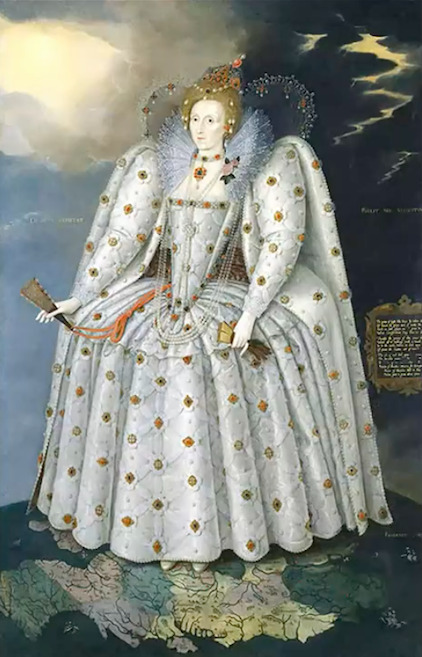
“Portrait d'Elizabeth Ière" dit le "Ditchley Portrait" de Marcus Gheeraerts le Jeune (1592) présenté à la conférence “S'Habiller à la Renaissance” par Marine Chaleroux - Historienne d'Art - de l'association Des Mots et Des Arts, avril 2023.
#conferences#style#dentelle#inspirations bijoux#bijoux de tête#perle#rubis#diamant#eventail#ElizabethI#Ditchley#Gheeraerts#Chaleroux#DesMotsDesArts
0 notes
Text
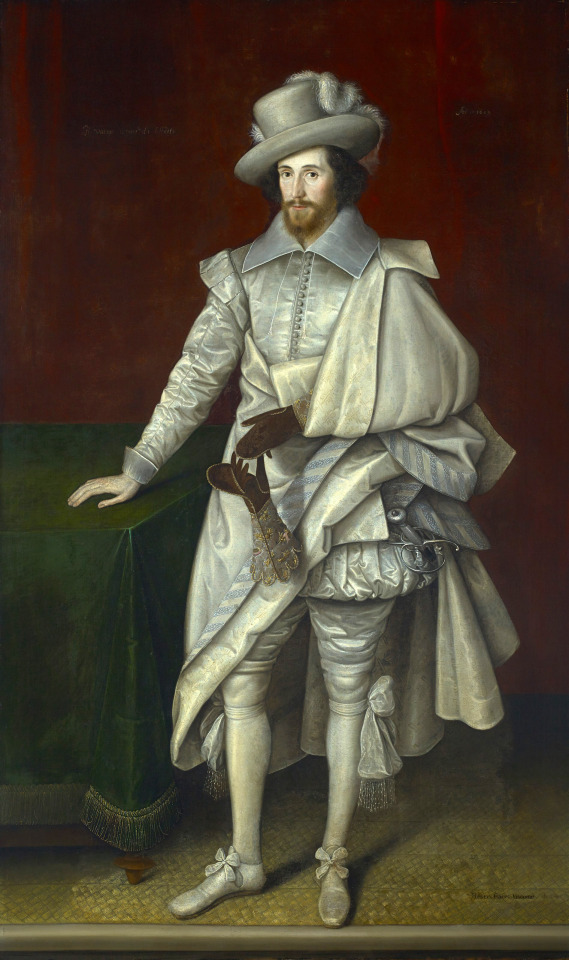
1603 Marcus Gheeraerts the Younger - Henry Cary, 1st Viscount Falkland
(Museum of Fine Arts, Houston)
124 notes
·
View notes
Photo
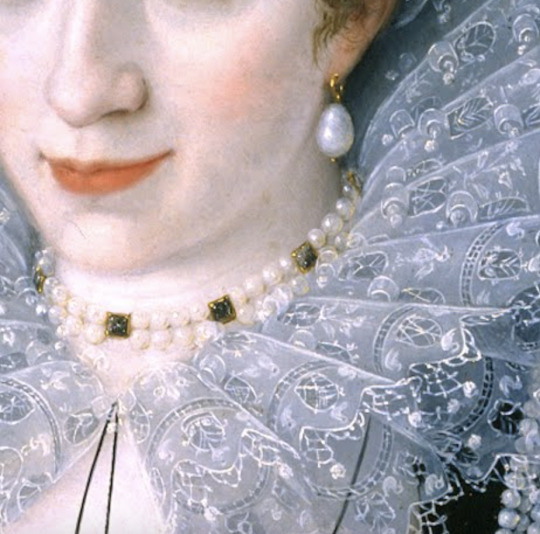

Portrait of an Unknown Lady (details)
Marcus Gheeraerts the Younger, 1595
13 notes
·
View notes
Photo
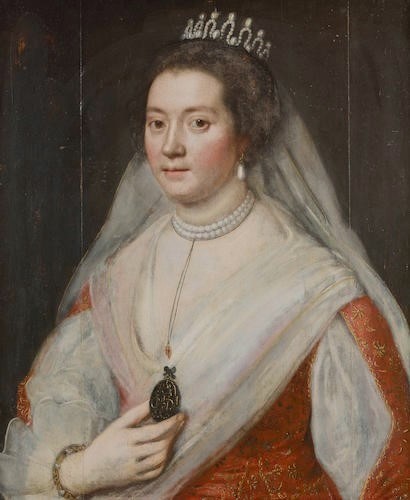


Portrait of Diana Cecil, Countess of Oxford (1596–1654), circle of Marcus Gheeraerts, before 1636
22 notes
·
View notes
Text
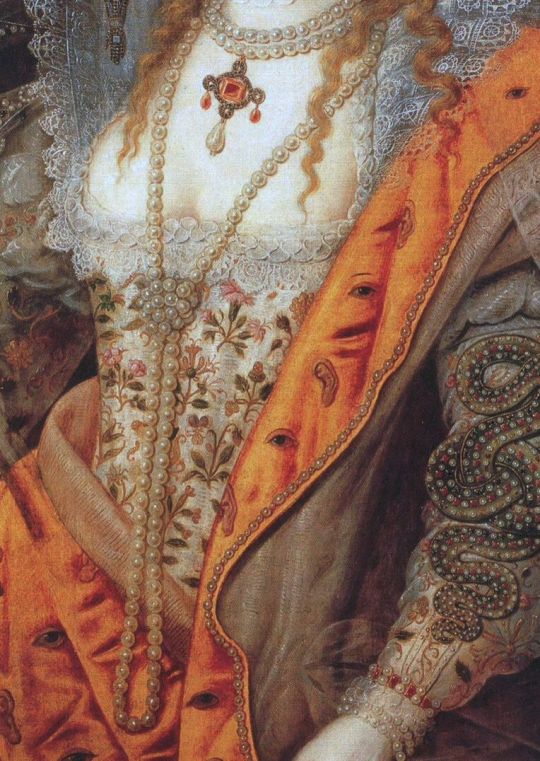
Marcus Gheeraerts the younger
6 notes
·
View notes